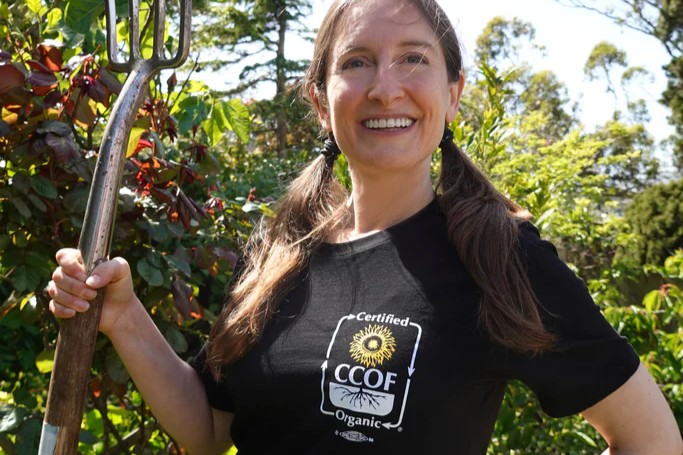Las fiestas son el momento perfecto para mostrar un poco más de amor a las personas que te importan (y al planeta). Este año, olvídate de las tarjetas regalo genéricas y regala algo más significativo: el regalo de apoyar lo ecológico.
Ya sea para un amante de la cocina, un amigo con conciencia ecológica o alguien que simplemente se merece comidas frescas y nutritivas, estas ideas de regalo conectan a sus seres queridos con los agricultores ecológicos y con un sistema alimentario más sano.
Regale alimentos ecológicos frescos y sabrosos
No hay nada mejor que los productos frescos y sabrosos cultivados con esmero y llevados directamente de las granjas locales a su mesa. Una suscripción a una CSA (Agricultura Apoyada por la Comunidad) es el regalo que sigue dando, literalmente. Su destinatario recibirá cajas de frutas y verduras ecológicas de temporada y, a veces, incluso huevos, productos lácteos o flores durante todo el año.
Es un regalo que apoya a los agricultores ecológicos locales, al tiempo que lleva productos frescos a la puerta de casa cada semana. Además, da a conocer nuevas variedades de productos que de otro modo nunca probarían.
¿Está listo para encontrar una CSA cerca de usted? Buscar en Directorio ecológico del CCOF para descubrir granjas ecológicas certificadas, CSA y productores de su zona.
Regala lo que devuelve
Estas fiestas, haga una donación a la Fundación CCOF en honor a un ser querido. Su donación ayuda a la próxima generación de agricultores orgánicos a prosperar, apoyando la educación, becas y recursos para los agricultores que cultivan suelos sanos, granjas resistentes y alimentos nutritivos para las comunidades de todo el país.
Es una forma significativa de homenajear a alguien que se preocupa por la agricultura sostenible, los sistemas alimentarios sanos o simplemente por hacer del mundo un lugar mejor.
Haga su donación hoy mismo: Donar
Compre productos CCOF para los entusiastas de la agricultura ecológica
¿Conoce a alguien a quien le encante mostrar su apoyo a la agricultura ecológica? Nuestra tienda CCOF tiene mercancía impresionante que permite a sus amigos y familiares llevar sus valores. Desde ropa acogedora hasta prácticas corbatas, cada artículo celebra la agricultura ecológica y apoya la misión de su certificadora.
Es el regalo perfecto para los asiduos a los mercados de agricultores, los jardineros de traspatio o cualquier persona apasionada por el origen de sus alimentos.
Eche un vistazo a nuestra selección: Tienda CCOF
Apoyar lo ecológico, apoyar a la comunidad
Los mejores regalos hacen algo más que hacer sonreír a alguien: crean un efecto dominó. Cuando regalas alimentos ecológicos, haces donaciones a agricultores ecológicos o compras a organizaciones que apoyan la agricultura sostenible, estás invirtiendo en suelos más sanos, aguas más limpias y comunidades locales prósperas.
Estas fiestas, haz regalos que nutran a las personas y al planeta. Regala apoyo a la agricultura ecológica.
¿Quiere más ideas para apoyar la agricultura ecológica durante todo el año? Explora nuestro Directorio ecológico del CCOF para encontrar productores ecológicos certificados, o saber más sobre la Impacto de la Fundación CCOF en la construcción de una comunidad ecológica más fuerte.



